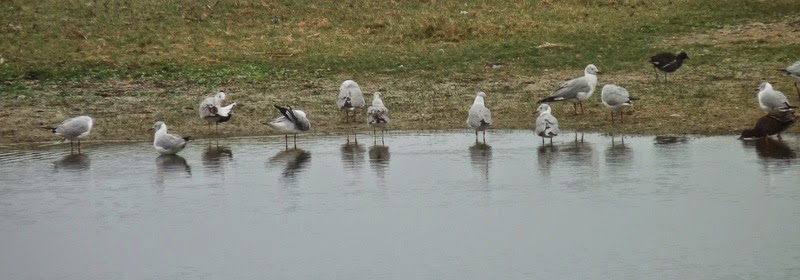I'm away for May, accompanying a natural history tour to tropical Queensland.
I don't have time to set up full postings for the time I'll be away, but in the hope
of keeping you, my valued readers, while I'm absent, I'm going to post a few brief
perspectives - snapshots perhaps - of some wildlife I've come across in cities.
I often leave my camera behind when I go out in towns, so I can think of many possible subjects
for this series that I can't offer you. In particular I can't offer a posting on an Australian city!
(My home town of Canberra doesn't count, as it's known as the Bush Capital, and it'd be too easy...)
I don't have time to set up full postings for the time I'll be away, but in the hope
of keeping you, my valued readers, while I'm absent, I'm going to post a few brief
perspectives - snapshots perhaps - of some wildlife I've come across in cities.
I often leave my camera behind when I go out in towns, so I can think of many possible subjects
for this series that I can't offer you. In particular I can't offer a posting on an Australian city!
(My home town of Canberra doesn't count, as it's known as the Bush Capital, and it'd be too easy...)
Lima, the capital of Peru, is a vast throbbing intimidating metropolis on the Pacific. Its growing population of nearly 10 million lives constantly under the influence of the cold Humboldt Current, with almost no rainfall (less than 50mm, mostly in the form of winter morning misty drizzle) and a persistent fog hanging over the metropolis, especially near the sea. In July the city sees on average less than an hour of sunshine a day. The outskirts in many places comprise seriously squalid slums of poor rural Peruvians hoping for work.
 |
| Typical fog, courtesy of the Humboldt Current, over the Lima coast. |
No, I'm afraid I wouldn't want to live there, but there are always some birds to be seen too.
 |
| West Peruvian Dove Zenaida meloda, Lima. Another common urban bird in Lima, also found throughout the Peruvian coastal strip, overlapping into adjacent Ecuador and Chile. |
By the sea to the south of the city is an extensive bleak area of industrial spoil and sometimes polluted swamp land which can be surprisingly rich in birds.
 |
| Grey-headed Gulls Chroicocephalus cirrocephalus, Lima coastal marshland. This pretty little gull has a curious distribution, in both Africa and South America. |
The seaside suburb of Miraflores is definitely one of the richer, pleasanter and greener areas of Lima, and some less expected urban birds can be found in its parks.
Unlike some of the other cities featured in this mini-series, Lima has many attractions for tourists, though wildlife isn't usually touted among them. That's no reason not to keep your eyes open while you're there though.
BACK NEXT THURSDAY, LIVE!




2 comments:
Wot: no Inca Terns from underneath the restaurant?
No, sadly I missed them. That's an omission I hope to remedy (not necessarily in Lima) in a couple of months though. Can't wait, has to be one of the most striking terms in the world!
Post a Comment